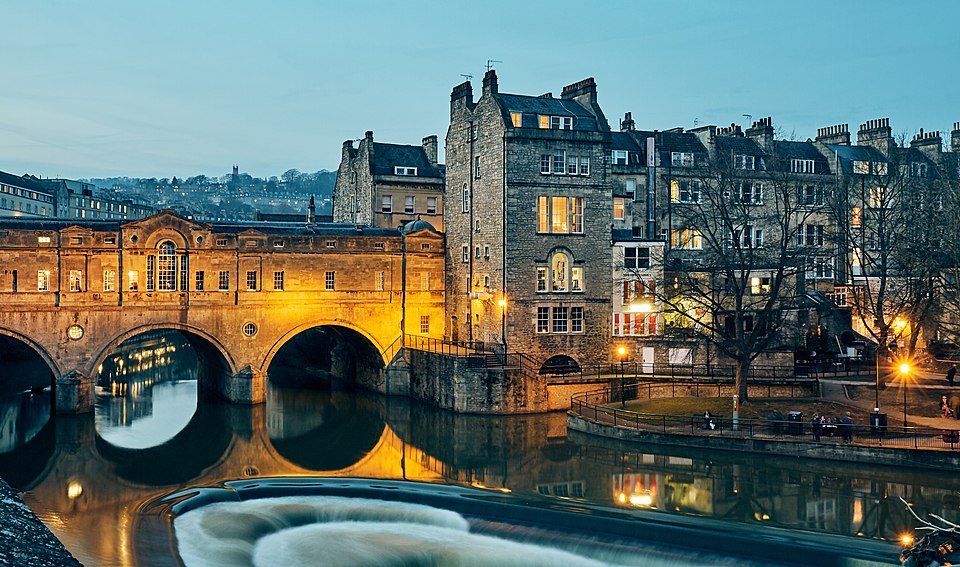Bath, Somerset
Introduction
Imagine breathing in the fresh air, the warmth of pristine waters enveloping your body, easing your muscles and calming your mind as you immerse yourself in an enticing hot spring nestled in the heart of Somerset, surrounded by verdant rolling hills and historic Roman architecture. This is a visit to Bath, an ultimate escape to a sanctuary of relaxation and wellness. Known for its natural hot springs and 18th-century Georgian architecture, Bath provides a rejuvenating experience fueled by centuries-old tradition, healing properties, scenic beauty, and practical charm. In this post, we aim to guide you through what this beautiful city and its healing waters offer while connecting you to a journey of relaxation, health, and liberty from daily stressors.
Overview of the Hot Springs
Anointed a UNESCO World Heritage City in 1987, Bath is nestled in southwest England, shadowed by the Cotswold Hills, and is renowned for its sole natural hot springs in the United Kingdom. This historic city is home to the Roman Baths, one of the most significant Roman remains north of the Alps, which marks the beginning of its thermal spa story.
The Roman Baths were constructed around 70 AD, a sanctuary for relaxation and healing that served as a religious site to the goddess Sulis Minerva. These spring waters, charged with over 40 different minerals, bubble up from underground at a constant temperature of about 46°C, offering an inviting soak even amid snowflakes or under a starlit sky.
The spring’s therapeutic water, with a high concentration of sulfur, calcium, and magnesium, together promote relaxation, reduce chronic pain, and improve skin conditions. Bath’s waters are a gift from the rainwater that fell around 10,000 years ago and has been naturally heated by the geothermal energy deep within the earth, making it an unparalleled wellness sanctuary in the UK.
Features & Benefits
Submerging in Bath’s thermal waters is like a natural spa therapy. The rich mineral composition promises several health benefits, like reducing stress, enhancing circulation, and ameliorating joint and muscle pain. Numerous studies have highlighted these beneficial effects, suggesting that balneotherapy can significantly alleviate symptoms of conditions like arthritis and fibromyalgia.
The city’s landscape enhances the spring experience dramatically. Soaking in the rooftop pool of the Thermae Bath Spa, you get panoramic views of the city and countryside, creating an immersive synergy of wellness and nature. Each season adorns Bath with its unique charm, revealing colors of lush green, radiant gold, or pristine white, depending on your visit’s timing.
Personal anecdotes from tourists often highlight emotional and physical rejuvenation they experience after a visit to the springs. Bath’s wellness offering is enhanced by additional amenities like the Wellness Suite in the Thermae Spa, home to several steam rooms and a 2,000-year-old Roman steam room. Nearby, you’ll find beautiful architecture, historic sites, and charming eateries to kick your vacation a notch higher.
Practical Information
Bristol International Airport is the nearest to Bath, a 45-minute drive away. There are several transport options, including rental cars, taxis, or coaches. Choose according to your convenience or budget. The journey unveils magnificent landscapes and charming villages, although weather conditions might influence your travel experience.
Although Bath is attractive throughout the year, spring and autumn are less crowded while offering mild weather. To gain the most of your hot spring visit, try dipping early in the morning or late in the evening. There are numerous ticket options to access the hot springs, and it’s wise to check out the official Thermae Bath Spa website for accurate pricing information.
Extras like towel and robe hire are also available. Remember to pack a swimsuit, toiletries, and a water bottle to stay hydrated during your visits. Don’t forget your camera to capture memories and marvel at nearby attractions like the Bath Abbey, Pulteney Bridge, and the Royal Crescent, enhancing Bath’s historic impression.
Tips for Visiting
It’s always advisable to drink plenty of water during your hot spring visits to avoid dehydration. Ideally, a 20-minute soak at a time is recommended, but do listen to your body and relax accordingly. People with certain health conditions, like pregnancy or heart diseases, should seek medical advice before visiting the springs.
Respecting the hot spa’s tranquil environment is vital. Maintain silence and considerate behavior, ensuring a pleasant experience for every visitor. Showering before entering the springs, respecting other bathers’ space, and following the rules and guidelines set by the spa management are crucial points to remember.
Pack suitable clothing, considering Bath’s unpredictable weather, and ensure to keep your belongings safe.
Conclusion
Bath’s hot springs offer a priceless blend of therapeutic benefits, scenic allure, and historical significance. Infused with restorative minerals, these waters promise a rejuvenating wellness escape that will charm you with its rich history, picture-perfect landscapes, and calming ambience. Tempted to experience the magical waters of Bath? Share your thoughts, queries, or previous experiences below and let the journey of healing unfold. We encourage you to explore other related posts like “Top Hot Springs Around the World” or “Best Wellness Retreats in the UK” and enhance your knowledge about wellness travel.
Relish the treasure of Bath, and let its warm, healing waters take you on a journey of revitalizing relaxation. This holistic wellness destination is waiting to welcome you with open arms.
Main Keyword: Bath Hot Spring
Meta Description: Dive into the healing waters of Bath’s natural hot springs, and let your journey of relaxation and rejuvenation unfold in this comprehensive guide to the city’s incredible thermal spas.







